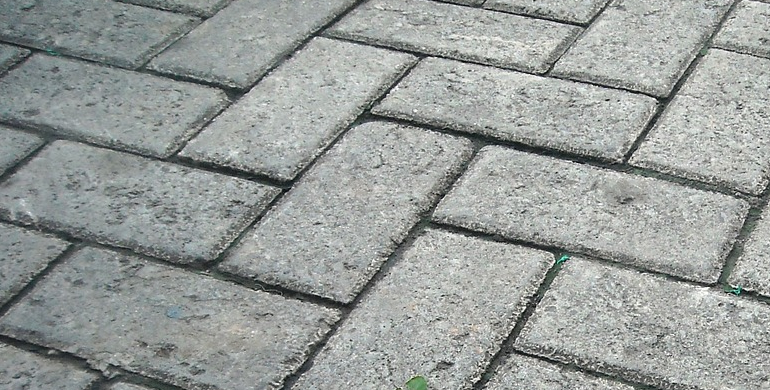While algae itself is mostly harmless, algae growth on your block paving looks unsightly and can create a slippery, hazardous surface when wet. Thankfully, algae is very easy to treat and can be done without any harsh chemicals: in this article we show you how.
.jpg)
White Vinegar
White vinegar is one of the best solutions to removing algae growth from your block paving. White vinegar is not only eco-friendly but a powerful cleaning solution too: Vinegar will effectively kill and remove algae. It also doubles up as a weed killer (ideal for the gaps between the pavers). To remove algae with vinegar, pick a dry day and start by sweeping the surface with a yard brush, removing any debris and loose surface dirt. Clear away patio furniture, garden ornaments and plant pots which could become stained or corroded by the acidity of the vinegar.
The next step is to rinse the patio well with your garden hose. Create an equal part white vinegar and water mixture in a jug and pour into a jug or watering can. Pour the mixture directly onto the patio, evenly covering all algae growth. Pay attention to areas where algae is particularly prevalent. You can also use a stronger vinegar mix for these areas if you like. Leave the mixture to work for 20-30 minutes.
After leaving the mixture to work, lift the now loose dirt with a stiff bristled brush and a block paving joint brush to clean between the block paving stones. Rinse the loose dirt away with your garden hose and leave to dry naturally. Once dry, the vinegar odour will disappear too.
After cleaning you may want to re-fill the joints with a joint compound: a brush in sand should do the trick!
.jpg)
Pressure Washing
Pressure washing is an effective way to remove algae growth without chemicals. Simply sweep the area while it’s dry and remove any furniture/garden ornaments. Pressure washing will cause dirt and grime to splatter, so use caution when washing around windows, fences, brickwork and garden structures, and be sure to take your washing off the line! Once you have removed furniture and swept away loose dirt, patch test a small area of patio on the weakest jet wash setting. Jet washes are very effective at removing dirt, but using one can sometimes damage your paving surface. We recommend only using a jet wash on block paving which has been sealed with an appropriate sealant. Once you have patch tested a small area on the lowest setting, you can experiment with higher settings if needed.
Start at the centre and spray outwards, taking care not to spray into the paving joints. Don’t spray directly downwards onto the paving, instead approach at a 90 degree angle. This will help to lift away dirt without affecting the joint compound too much. Work in straight lines and repeat if necessary. For stubborn algae, you can scrub the area first with a yard brush and a diluted soap and water solution.

Bleach
Bleach is a powerful cleaning agent and very effective at remove algae, however many choose to avoid this option because of its strong odour and harmful risks to the environment. Bleach can also lighten your paving stones so always use with caution. If you do choose to use bleach make sure to dilute it well according to manufacturer instructions and take care around plant beds and grass. Rinse very well after use, especially if you have children or pets. We recommend only using bleach if other methods have failed.
To use bleach, first fill up a bucket with water and add your bleach once the bucket is full, this will reduce the chance of splash back onto skin and eyes. add the bleach according to the instructions on the bottle: usually the dose is around 1 part bleach to 10 parts water. Test on an inconspicuous area by pouring a little of the mixture onto the patio, working in with a brush and leaving to settle for fifteen minutes. Rinse away the mixture and leave to dry for 24 hours as lightening effects could take place during this time. Pour the solution over the patio, leave to work for a few minutes and work away the algae with a stiff bristled yard brush. Rinse away with plenty of clean water. Repeating these steps may be necessary to remove stubborn lichens.



.jpg)
.jpg)





